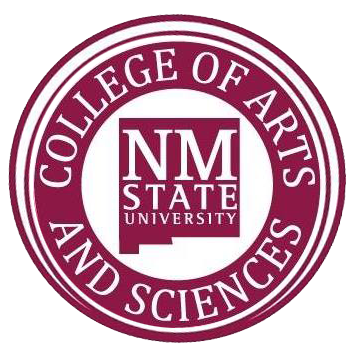Original article: https://newsroom.nmsu.edu/news/astronomer-joins-nmsu-with-nsf-fellowship-to-research-how-galaxies-evolve/s/f29b47f5-3667-40cb-a6ba-2c7e6067bb1c
Stephanie Ho arrived at New Mexico State University in September with a National Science Foundation Astronomy and Astrophysics Fellowship. Over the next three years, she will carry out a program of research and education. Ho, who earned her doctorate from University of California, Santa Barbara (UCSB), chose NMSU to continue her research.
"Dr. Ho will be senior member of our extragalactic research team, to which she will be adding her scientific expertise," said Chris Churchill, NMSU astronomy professor whose collaboration with Ho brought her to NMSU. "She will be engaging in developing new projects to study the evolution of galaxies, writing and publishing journal papers, conceiving and carrying out new experiments, helping to propose to national agencies like NASA and the National Science Foundation for research funding and working with and mentoring graduate students."
The circumgalactic medium (CGM) of nearby galaxies is the focus of Ho’s research, studying how gas flows in and out of galaxies. Results from this project will show how gas gradually accretes onto galaxies, fuels star formation and grows galactic disks.
"Circumgalactic gas is basically diffuse gas surrounding a galaxy," explained Ho. "When you look at galaxy images, you see these spiral arms. But even for the dark region beyond that, there's actually a lot of gas around the galaxy. Just because we can't see it in an image, that doesn't mean it's not there. This research will let us understand how the circumgalactic medium is connected to the galaxies, therefore how it feeds the galaxy disk and generally how galaxies evolve."
Ho will use new and archived data that measures circumgalactic gas around her selected galaxies ranging from those 2.5 billion years away to nearby galaxies. She will couple archived data from the Hubble Space Telescope with data from the Apache Point Observatory's 3.5-m telescope and Sloan Digital Sky Survey 2.5-meter telescope’s Integrated Field Unit (IFU) spectroscopy. IFU provides spectral information over a 2D field.
"There are other techniques I use like the absorption line technique," Ho said. "What happens is there's some diffuse gas around galaxies and if I have a bright background source behind the gas, I can look at that bright source and then take a spectrum and we'll see absorption lines representing the gas around the galaxy. That's the circumgalactic gas."
The NSF fellowship aims to provide highly qualified, early-career investigators of significant potential with experience in research and education that will establish them in positions of leadership in the scientific community. These fellowships may be taken to the researcher's institution of choice.
"The astronomy department is extremely pleased to have Dr. Ho join us and are honored that she has chosen NMSU to carry out her prestigious National Science Foundation Fellowship," Churchill said. "Dr. Ho is an expert at studying the connection between galaxies and the processes by which they grow, form stars, and interact with their cosmic surroundings. Her expertise will complement and strengthen the extragalactic research undertaken at NMSU."
Ho's undergraduate studies began in Hong Kong before she attended the University of California at Santa Barbara as a graduate student and started collaborating with Churchill. She received her Ph.D. from UCSB in 2019 and was a postdoctoral researcher at Texas A&M before she joined NMSU.
Churchill said Ho has been granted affiliate faculty status. In that capacity, she will be able to contribute to the broader mission of the faculty in the Department of Astronomy in the College of Arts and Sciences, which would include teaching undergraduate courses, teaching both undergraduate and graduate-level special research topics courses, serving on department committees and leading/participating in outreach events in the Las Cruces community.
"In addition to research, doing outreach is important to get the general public interested in science and astronomy," said Ho. "I'd like to have series of activities to do science demonstrations, especially about absorption line spectra that is so close to my research, so they can see one of the techniques used to look at these diffuse gases that we don't seem to see. There are a lot of aspects that I would like to contribute and expand the astronomy outreach effort."
